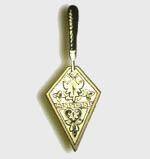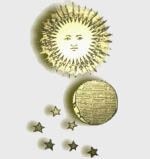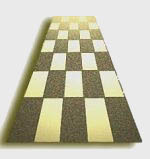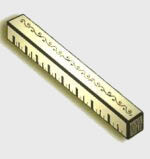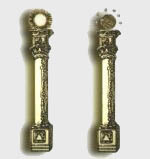
Situated at the Temple entrance to the West, in memory of those which Hiram placed at the entrance to Solomon’s Temple, symbolizes duality. The one with three pomegranates refers to the female element, to the Air, the breath that feeds life, the feminine sensitivity, the Mercury of the Wise Men; The other, which sustains the Globe, the masculine, the Fire, the vital warmth devouring, the activity, the Sickness of the Alchemists. From the duplicity of the column symbol, the dichotomy between the vertical and horizontal, between the terrestrial and the air values, the quest for opposites and complementary principles is born. From a historical point of view, apart from the architectural significance, the “column” has the connotations of height, strength, tension, robustness and structure. Jachin is therefore the Force, and Boaz is, traditionally, the name of David’s grandfather, the royal pillar, the one who symbolized, during Solomon’s time, the concept of Mishpat, justice. The column also means perpendicularity, stability, balance, controlled play of dynamics between up and down, energy transmission channel between the top and the bottom. Jachin, the first sacerdot of the Temple of Solomon, gave his own name to the column that symbolized the principle of fairness, of justice, inspired by the ancient solar cult of the Canaanites, who saw the Light-God who watched the world from the heights. The uncontrollable pact, the foundation of the relationship with divinity, the stability symbolized by the twin columns completes the role of the foundation of the inner edifice that the mason must design and realize.
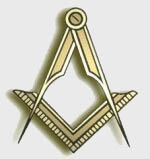


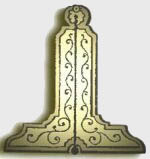

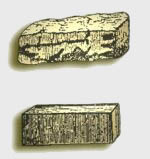 In general the metaphor of the stone is related to its identification with the Mason itself; the Masonic work of measuring and polishing the rough stone corresponds to its transformation itself, which the Mason makes to pass from the profane, unconscious and passive stage to the regular, creative and conscious state of the free freemason. Just as rough stone is not suitable for building a cathedral because it causes instability and disharmony, so the cubic stone, regular and polished, resembles its uniqueness with other stones worked the same and contributes to the rise of the Temple. This correlation implies, therefore, that a mason can work for the good and progress of the country and of humanity, perfecting himself at the same time.
In general the metaphor of the stone is related to its identification with the Mason itself; the Masonic work of measuring and polishing the rough stone corresponds to its transformation itself, which the Mason makes to pass from the profane, unconscious and passive stage to the regular, creative and conscious state of the free freemason. Just as rough stone is not suitable for building a cathedral because it causes instability and disharmony, so the cubic stone, regular and polished, resembles its uniqueness with other stones worked the same and contributes to the rise of the Temple. This correlation implies, therefore, that a mason can work for the good and progress of the country and of humanity, perfecting himself at the same time.
